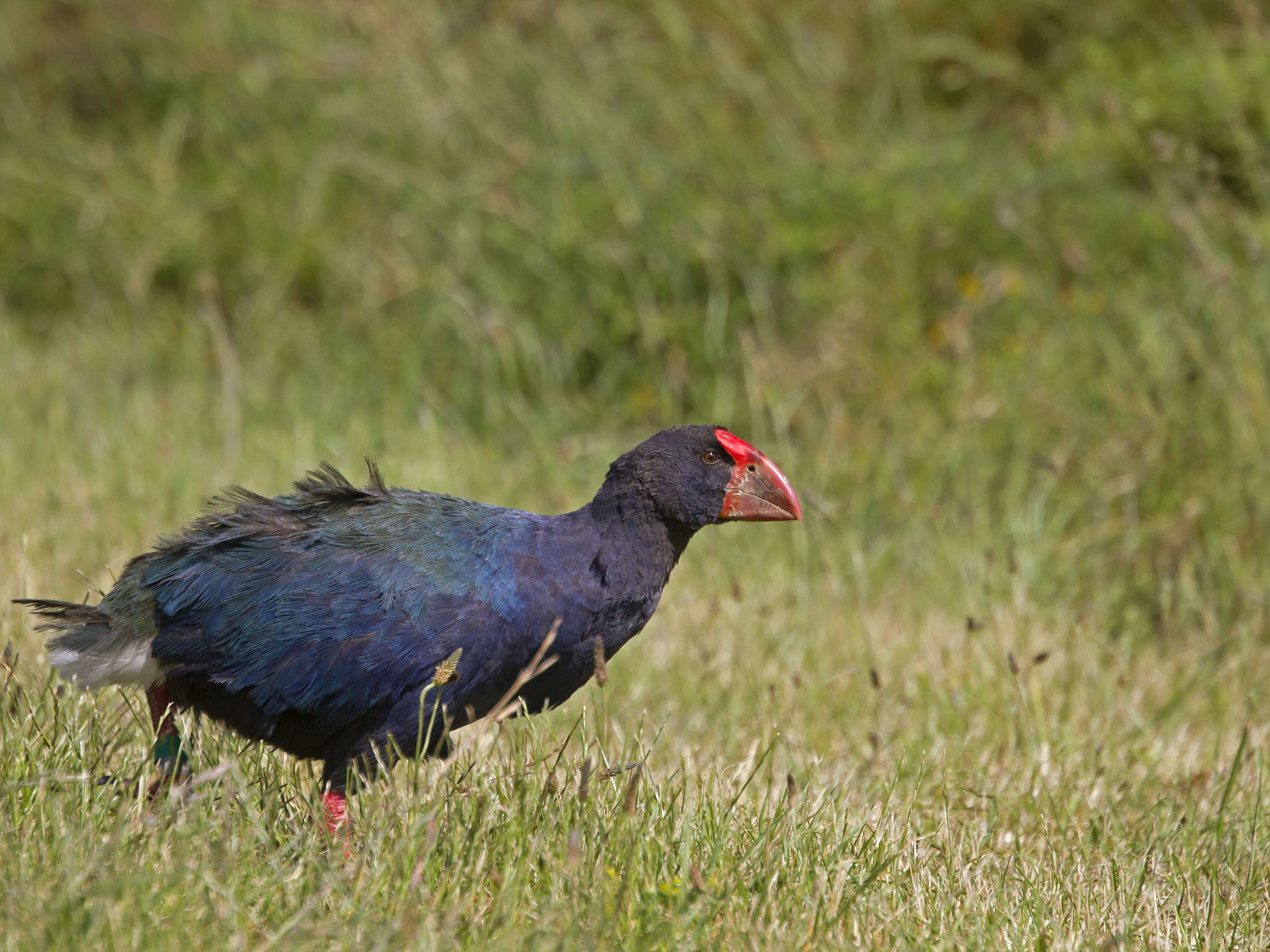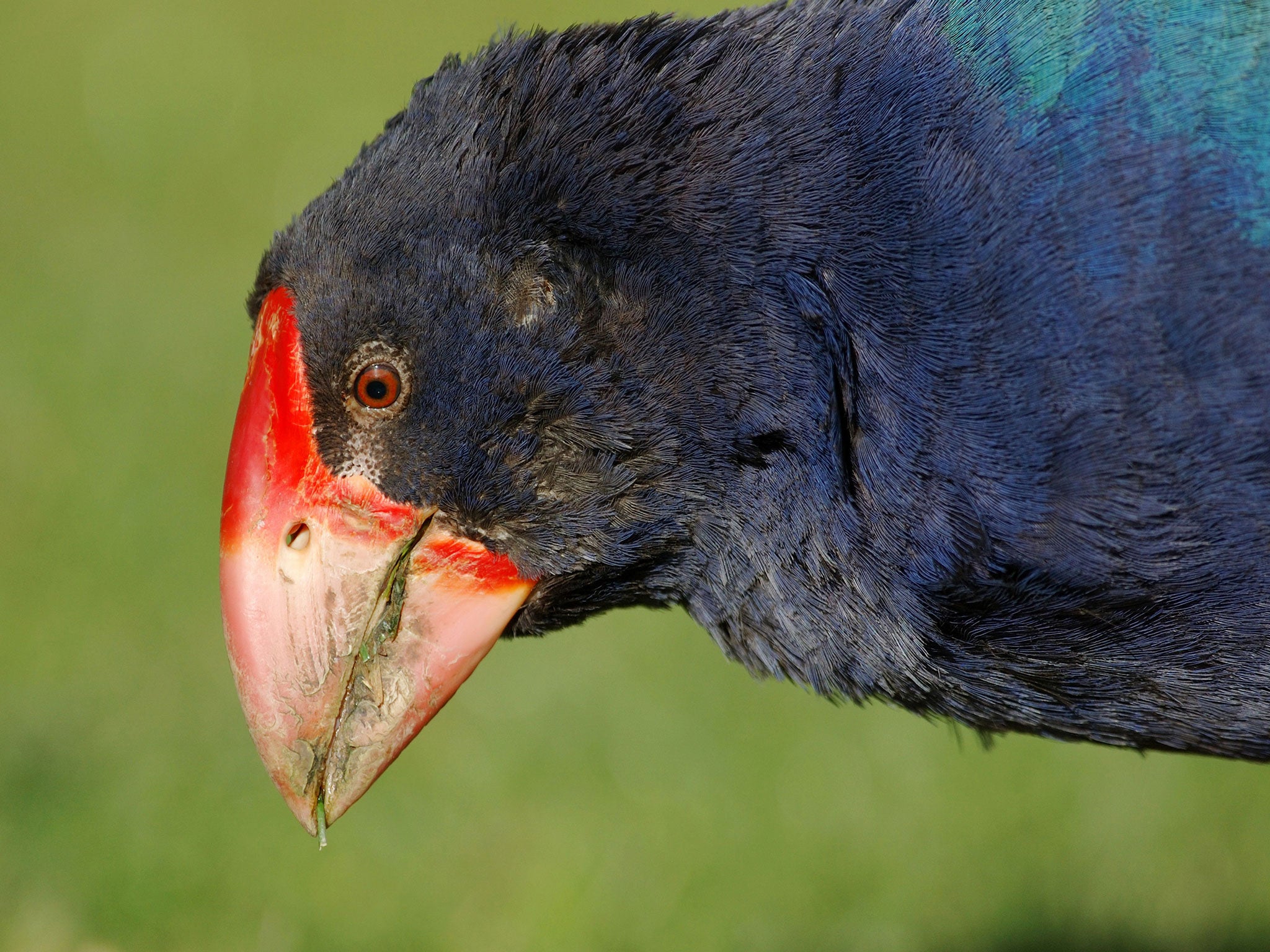New Zealand accidentally culls critically endangered takahe bird
The country has been funding conservation projects to protect the endangered species over the last decade

Your support helps us to tell the story
Our mission is to deliver unbiased, fact-based reporting that holds power to account and exposes the truth.
Whether $5 or $50, every contribution counts.
Support us to deliver journalism without an agenda.

Louise Thomas
Editor
Four critically endangered birds have been accidentally shot dead by hunters after they mistook the rare takahe for another bird that was being culled.
There are only 300 of the rare Takahe birds in the world, who are known for their distinctive orange beaks and petrol blue feathers. Most of them are in conservation programmes, with around 70 left in the wild in the mountains.
They were mistakenly killed during Department of Conservation approved cull of puekoko; a common bird known for its aggressive behaviour.
The National President of the New Zealand Deerstalkers’ Association (NZDA), who were carrying out the cull, said he was appalled by the killings.
"I share with the department a concern that the deaths will affect efforts to save an endangered species," he said. "I apologise to the department and to the country at large.

Takahe are officially marked as a “critically endangered species” and have been subject to a conservation programme of considerable expense in the country for the last 11 years.
This has largely involved relocating the birds to “predator free” islands to boost their chances of survival.
A spokesperson for the Department of Conservation told the New Zealand Herald the error had arisen when the hunters got confused between the two species, resulting in the Takahe deaths.
He told the newspaper hunters had been carefully briefed on how to tell the difference between the two birds and the government will now hold an investigation into the incident.
Subscribe to Independent Premium to bookmark this article
Want to bookmark your favourite articles and stories to read or reference later? Start your Independent Premium subscription today.
Join our commenting forum
Join thought-provoking conversations, follow other Independent readers and see their replies
Comments